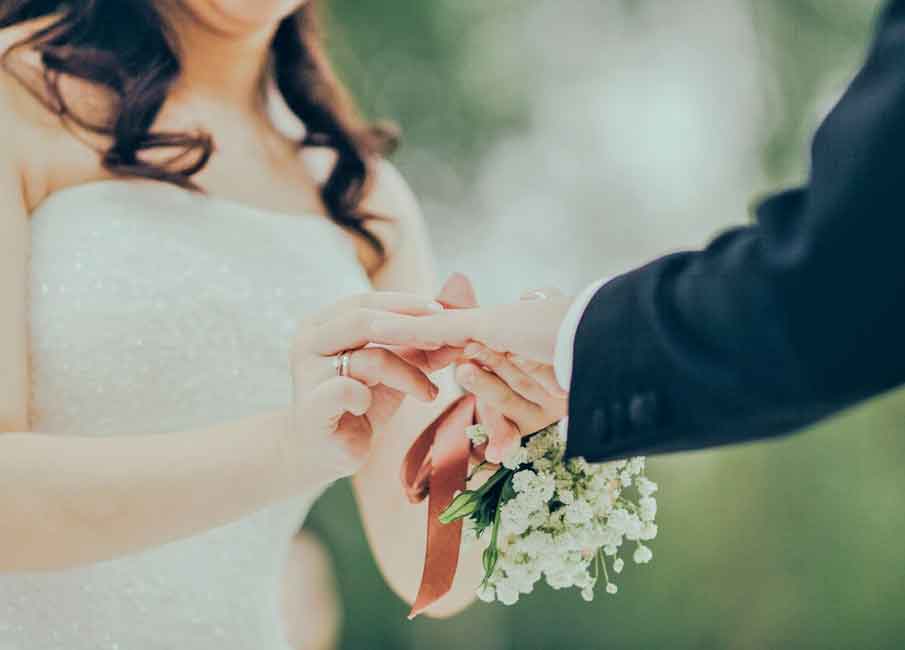Asian Wedding Traditions Foreign Men Should Learn

Chinese weddings believe that wearing a dress colored with gold and red brings good fortune.
“Thank you for showing me how it feels to be pursued in a way that honors God. To be fought. So today, I stand before you in front of our family and friends fully convinced that you are mine and I am yours.”
Some of the sweetest messages one can say can be heard during weddings. Such messages go through your ears and touch your heart.
Yes, weddings can be as fascinating as it sounds, but this celebration of love needs affirmation and preparation from the people that surround it.
Settling down, however, is not a simple choice. There are customs and traditions to consider during the time of union.
The countries of the west have their ways and traditions, the same goes with the nations of the east. Asia, in particular, is a continent that has a diversity of cultures and rituals which uphold traditions.
Unlike any other country, Asian Wedding Traditions are considered to be reflective of the deep sense of family and community. That is why every significant event in Asian countries follows what their ancestors believe, which is to strengthen the bond of every married couple.
Two Nations’ Wedding Practices That Make You Amazed
Read on for the common traditions that you can witness at a Chinese and Filipino wedding.
Chinese Weddings
Pre-celebration
Guo Da Li. The Chinese betrothal ceremony expects the groom to give Chinese wedding gifts such as gold jewelry, dragon and phoenix wax candles, tea leaves and sesame seeds, wine or brandy, etc. to the parents of the bride.
This ritual observance is done before the day of the wedding as a symbol of prosperity and good fortune.
When the bride’s parents accept the proposal, they will return half of the gifts as a way to wish for a good relationship with the groom’s parents.
Auspicious wedding date. As for the date of the wedding ceremony, it isn’t chosen by chance.
Couples consult a fortune teller or a Feng Shui about the auspicious date for the success of the wedding. The bride and groom’s birthday details and Chinese zodiac signs are important elements in choosing the best date.
An Chuang. This ritual falls on the perfect date and time. This happens two to three days before the big day.
This tradition symbolizes a sweet and long-lasting marriage blessed with fertility. The important thing to remember is that no one is allowed to sit or lie on the bed until the newlyweds return at the end of the night of the wedding.
Chuangmen. This is also called Chinese door games. This is initiated by the bridesmaids to evaluate the groom’s determination to marry the bride.
The groom will undergo a series of tests with different difficulty levels. Once the groom wins all the stages, he will hand over a red packet with money for the bridesmaids to surrender the bride. This follows the Chinese tea ceremony.
Jing Cha. This is an imperative tradition performed at Chinese weddings. This ceremony is the time for the couple to express their respect, gratitude and appreciation for their parents’ love and support. A red tea set with a Double Happiness symbol.

Most loving couples dream to reach the big day of their relationship.
During the Ceremony
Exchange of Vows. The exchanging of vows of the bride and groom in Chinese weddings may happen in the local government office or in a private place where the couple stands in front of the altar to pay respect to their ancestors and ends with a bow.
However, some couples may incorporate some traditions of western weddings, like complete with a white dress and suit while walking in the aisle.
Wedding banquet. The wedding banquet comes next after the exchange of vows. This part of the ceremony is prepared by the couple’s parents. At this time, the bride will be changing his dress into a red qipao.
Yam Seng. A toast is done to congratulate the groom for winning the hands of his bride.
Post-celebration
After three days of being married, the bride and groom will go to her parents’ house. The parents will prepare a mini banquet for the newlyweds, and the groom will bring a roasted pig as a gift.
At this point, the bride is no longer part of the family.
Filipino Weddings
Pre-celebration
Pamamanhikan. This is the first official stage of a Filipino wedding. Sometimes, this stage happens months or weeks before the union.
The groom, together with his parents and other family members, will go to the house of his bride. This symbolizes the official proposal to the parents of the bride. During this time, the initial blessing of the parents will be given to both the bride and groom.
In some regions of the country, pamamanhikan may include the giving of dowry.
Wedding preparations happen after accepting the groom’s proposal.
Auspicious wedding date. In the Philippines, there is no specific, best date to marry. However, there are months when weddings are in peak season.
For instance, April-May are festive seasons and December-January are gift-giving seasons. But time immemorial, most weddings fall in June.
Bridal shower and Bachelor party. In this modern day, the family and friends of the couple will plan for a separate party for each of them days before the wedding.
This serves as a send-off party for the couple as they enter married life. This is similar to other western wedding traditions.
It is also believed that the bride and groom must not see each other the night before the wedding. This is a belief that most couples adhere to for their wedding to push through…
During the Ceremony
Parental Blessings. During the ceremony, the couple asks for blessings from both parents by kissing their hands or tapping their hands on their foreheads or in Tagalog mano.
Veil and Cord. In the middle of the ceremony, the godparents of the couple draped a veil on the bride’s head and groom’s shoulders.
Other godparents wrapped the ceremonial cord, also known as yugal, around the couple. This cord symbolizes the eternal bond of fidelity for the newlyweds.
13 Coins. The coins are called Arrhae and are given by the groom to his bride as a symbol of prosperity. This coin ceremony is similar to other Catholic and Hispanic weddings worldwide.
Unity Candle. Two wedding sponsors light candles situated on each side of the couple. Afterwards, the couple each takes a candle and lights a unity candle together. The lighting of the candle signifies the couple’s union and their family’s union.
Wedding Reception. During the wedding reception, a program is organized by the team which allows the couple, family members, and guests to share their wishes with the newlyweds.
There are also rituals that organizers prepare as a continuation of the ceremony. The rituals include eating rice cakes, money dancing, sharing of food, and wedding performances.
Post-celebration
Unlike other wedding traditions, Filipino newlyweds don’t necessarily go to their parents house the first day after the wedding. Most newlyweds spend their time together which is the start of their honeymoon.
Some of them go out of town or outside the country to continue celebrating their new lives as a married couple.
This Is The Happiest Moment of Your Life
How wonderful it is to feel that after a while of praying and waiting for someone who could love you genuinely, that perfect time has finally come.
It is a blessing to be celebrated.
And no matter where your life takes you, one thing is for sure, you have your life partner and you will not face it alone.
Different beginnings. Same ending. A perfect wedding.























